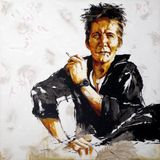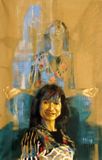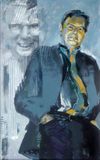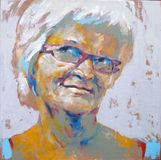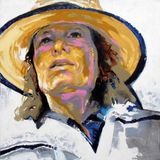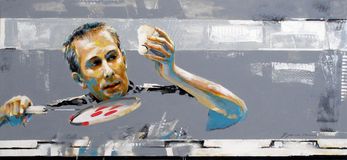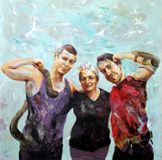Portaits
BIOGRAPHY in COLOURS
The Portrait
Since the portrait was defined as a separate art-form back in the renaissance, that, to be portrayed, has been common tradition. It was done either to mark significant events or to demonstrate social recognition.
Nowadays, in our fragmented world, where globalisation etc. on the one hand remove us from our roots and on the other hand creates new possibilities, the portrait makes a tangible connection between past and present.
An artisticly performed portrait relates to contemporary artistic and social conventions.
In order achieve a dialogue within my work, I have, in the past many years, experimented immensely within my portraiture as an art form, using artisanal crafts and aesthetic techniques in my artwork.
The portrait as a theme is ancient and I have a deep interest in both classic and experimental techniques. I am inspired by the combination of styles, containing endless possibilities which ends up in my artistic footprint. That does not mean, however, that I have found all the answers. I am still on my artistic journey.
What can portraits as an art-form achieve? The same principals apply as in conventional painting: colour, composition, aesthetic, artisanal crafts etc. When you combine all these elements, you create character, form of expression, interpretation, provocation and concept.
Where is the limit of portraits? and where is the limit of the art-work?
What if the portrait in its own way doesn't care about being an art-work?
The Process
The basis for my portraits are ideas, concepts and a manipulation of reality.
In every portrait, I create some kind of staging from imagination or perception of the portrayed.
Each portrayed person represents their own history. The portrait also tells the story of the society in which they live and the part they play in this society. It describes the person's ideology towards the greater questions; the meaning of, and important choices in, life. I am fascinated by faces and I perceive it as a privilege to be able to interpret another person's inner and outer selves; who is this portrayed person, how do they live, which values do they hold dear, and what are their thoughts about life in general?
My portraits are not meant to be an interpretation of real life, as a naturalistic reproduction of the models, neither are they caricatures. They are my search for the illusion of the truth. In my portraits, I aim to penetrate the outer glamorous impression, to reach into the very soul, where the whole of the person resides. I aim to create a drama in my work, a drama between the outer facade and the inner life - it is in this field of tension that the real portrait emerges.
This way of illustrating the different aspects is very characteristic in my portraits. Besides the portrayed face in the painting, there are symbols, a line of attributes and little stories that altogether create life around the model, which both separates and together forms the statements of the portrait.
Micro Macro
My starting point is the new reality i.e. the dramatic changes in the industrial environment and technological progress.
There is no idealisation or self control in my portraits but, on the other hand, a surrender to the chaotic impression. The paintings differs significantly from traditional portraits as the main emphasis lies my artistic experiments.
The portraits need to show the personality within, using a passionate language of form, destruction and expressionism.
My work process can be described as Cosmic Chaos. A chaos which aims to take us towards a common understanding, a complete picture. The tension develops from surfaces, lines, points and heavy wide brush strokes, all of which gives the portrait a more sketchy impression. I am trying to fragment the painting - explode it in all directions to a place where rules, frames and sensibility do not exist.
The language of form in the painting is used as a shortcut into a macro level. In this level, every detail is an indispensable piece of a complicated puzzle which makes up the painting. It is meant to combine fiction with reality and the viewer must be left with the question of where imagination ends and reality begins.
X-ray
My work has created a new approach to the classic portrait; the reversible portrait, where a painting is created on both sides of the canvas. The nice classic version on the front (Y) and the free, raw and interpreted version on the back (X).
I strive for these double portraits to have the illusion of a dialogue between artwork and viewer. Thus it offers the possibility to get close to facets of the portrayed personality while, at the same time, integrating the painting and its surfaces.
Y - The classic portrait - The starting point here is the desire to portray reality. Not necessarily naturalistic, but realistic - where one can read the character and personality directly from the facial features.
All portraits looks like the model, but they also to a large extent render the person behind, in a private and intimate mood.
X - The raw portrait - these works are not entirely beautifying! I make every effort to hunt the sincere and original and here, the recognition of the portrayed are not the primary goal.
The discovery of the actual portrait is left to the viewers personal interpretation and imagination. The creation of this type of portraits often leaves me with a question-mark around the role of the portrait in contemporary art. Where indeed is the limit for what the portrait as an independent work is to be able to show either myself or the viewer?
© By Janusz Tyrpak
